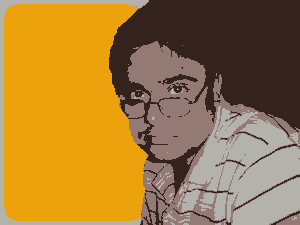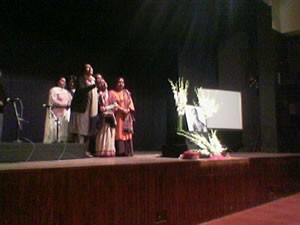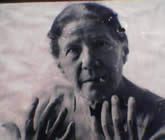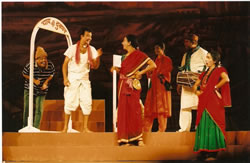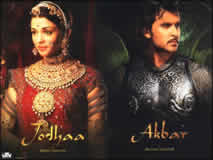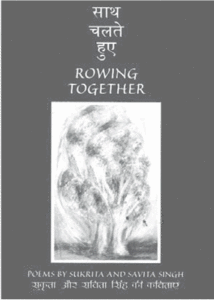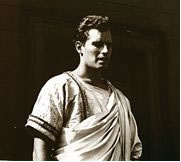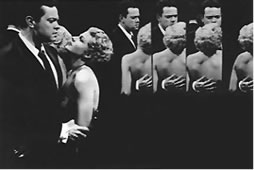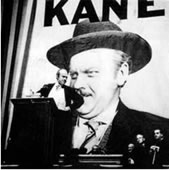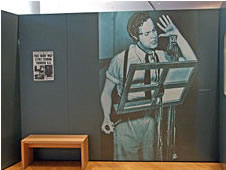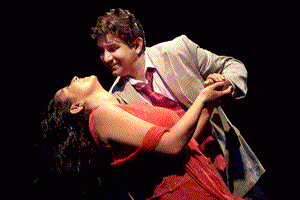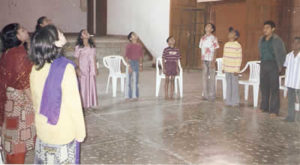Keval Arora’s Kolumn – Casting Discordance and Difference
Keval Arora’s Kolumn
Casting Discordance and Difference
When speaking to students about basic differences between written and performed narratives, I find their responses falling into mainly two categories. Some prefer the novel for the freedom it grants readers by virtue of the story being embodied purely as words on a page, as verbal stimuli that allow readers to visualise fictional worlds through their own imagination. Others argue in favour of the challenge posed by performed narratives in theatre and cinema because the non-verbalised quality of visual data permits considerable latitude (and difficulty) in ascribing meanings and words to that which is being shown. It is not possible or necessary to reconcile these responses because discovering greater pleasure in one over the other is a matter of temperament more than anything else.
As for the argument that data transmitted through visuality allows considerable latitude in interpretation, one needs to remember that interpretive latitude is not merely a consequence of the visual nature of performance. After all, words and speech are also vital factors in the stories that theatre and cinema offer us. It is the absence of an overarching perspective in the guise of an authorial voice that crucially produces our sensation of being left to our own devices when we watch a performance. Choices are of course exercised by the director, the actors and the several designers in shaping the performative text, but finally spectators respond to these choices after their own fashion, sifting, digesting and naming things according to their own proclivities and experience. The best plays facilitate such latitude; only the very worst thrust pre-digested meaning capsules down spectators’ gullets.
In most theatre, we see things happen on stage and find words for them as we go along, balancing and ordering information to fit into the overall scheme that gradually takes shape within us. It isn’t easy: rendering the inherent ambiguity of visual data into the grasping fixity of ideas and our words for these is troublesome, but we manage nonetheless to the best of our individual abilities. It’s when things don’t quite fit that matters become interesting. The discordant note is quickly checked for whether it is accidental or deliberate. If we conclude that it was unplanned, the matter is set aside or filed away. But, when the discordance appears to be deliberate, spectating becomes a difficult business.
By its very nature, discordance catches us unprepared and leaves us to fend for ourselves. But how do you do that when the signposts along the way suddenly appear in an unfamiliar language? It gets even more complicated if the play induces its discordant note not simply through a belying of audience expectations but also through entering terrains that challenge the audience’s sense of propriety and correctness. With one man’s meat being another man’s poison, spectators no longer react in contiguous fashion. The same show evokes a mixed response. Or, some performances are received with hostility, while others drum up applause beyond the performers’ own expectations.
One such instance of discordance is the way racial and regional difference – skin colour, speech and accent – are presented in the theatre. We’ve heard Asian actors who work in the West complain of racial prejudice in casting. Not simply in terms of a ghettoization of their talent – that is, of their being employed only for the few pronouncedly Asian roles that are available in local theatre – but also that they sometimes lose out in even this race when non-Asian actors are chosen to play Asian characters. (Remember our discontent when Attenborough preferred Ben Kingsley over our own Naseeruddin Shah for his Gandhi?) It is possible to seek legal redress when employers make workplace distinctions on the basis of racial or cultural identity. But actors are accustomed to being ousted or accommodated on the basis of whether they ‘look the part’. When Roysten Abel speaks of the genesis of his Othello: A Play in Black and White lying in his actress wife being rejected for a role because she ‘didn’t look Indian enough’, we are reminded that this can be an intra-cultural problem too.
Attenborough’s response regarding his choice of actor for Gandhi – ‘I looked only at acting ability’ or something to that effect – seemed a tad too convenient at the time, but today when groups adopt the same method in reverse flow as they cast actors of colour in roles that were hitherto regarded the province of the great white male, do we not approve? However, we have to recognise the inadmissibility of regarding such levelling out simply as an equal-opportunity initiative. ‘Colour blindness’ is an undoubtedly progressive policy in employment offices, but I’m not sure it ought to be taken uncritically on board in the realm of performance. Directors may well deserve praise in declaring some roles to be colour neutral – not all; it would take considerable rewriting to have some roles, say, Othello, not played as a black man – but spectators cannot be expected to collude with such erasure when colour-neutral casting is made operative.
Take, for instance, the choice of an actor of Jamaican descent to play the king Creon in a production of Sophocles’ Antigone that the British Council had brought down here several years ago. Having a black Creon amidst a society of white Thebans inevitably drew attention to the skin tone of the actor and posed questions as to how ‘black’ was being ‘read’ in the portrayal of this despotic do-gooder. It is difficult to not see the actor’s colour as an articulation of the tyranny Creon practises over the citizens of his state. In which case, does not the director’s decision to have a ‘black’ actor play the role – especially as this decision seems an individualised departure from conventional practice – constitute a racial slur? The funny thing about this particular production was that everyone on both sides of the Kamani curtain seemed oblivious to Creon’s pigmentation, thereby reminding us that political correctness is a sly ophthalmic disease that can strike any time in the oddest of public spaces.
The instance of Peter Brook’s Mahabharata is slightly different. When the film version of his theatre production was screened in Delhi, most people seemed transfixed by the fact that the roles of Bhishma and Bhima had been assayed by black actors. At a discussion that followed the screening, the matter was repeatedly raised much to the bewilderment of Brook’s cast. Interestingly, the indignation provoked by the casting was not consensual. Those who were upset about Bhishma ‘Pitamah’ being ensconced in a black skin had little problem with Bhima’s coloration. On the other, those who were uneasy with the apparently racist conjunction of the Bhima actor’s colour and his playing of Bhima in a manner that bordered on minstrel clowning had no problems with the quiet dignity awarded to Bhishma, the actor’s colour notwithstanding.
A similar problem is ‘visible’ each year in the casting policy employed for student productions at the National School of Drama. In an attempt to honour the ‘National’ in its name, the NSD today offers acting roles in its Hindi language productions to all its acting students, regardless of their ability to speak the language comfortably. Here too, one can respect the policy of fairness that underlies this decision, but in no way does this obviate our discomfort as spectators when we are expected to ignore the aural discordance that ensues in performance. Little attempt is made to ground or ‘explain’ within the fiction the fact of such difference, so audiences take these productions at half-cock so to speak, responding to some and ignoring some other stimuli emanating from the stage.
In contrast stands a production of Ibsen’s A Doll’s House that’s been impressing audiences wherever it has played. By showcasing a cast where the tallest male actor is merely 4ft 5in to the female actors who tower above them in height, the production DollHouse by the New York-based avant-garde theatre company Mabou Mines embodies the questions discussed above as an unrelenting problematic. In this production, Ibsen’s theme of repressive gender inequality is heightened through a set design that is scaled to cater to the men’s heights, as a result of which the women find themselves constantly boxed in, cramped and ignored in a world insensitive to their needs.
Dwarfs (to deliberately use the D-word) have for long been staple figures of fun as circus clowns, and we have learnt as adults to not pander any more to the heightist prejudice inculcated in us as children. But, what does one do when a play unequivocally asks us to acknowledge dwarfism as the theatrical sign of a blustering patriarchy? Mark Povinelli who plays Torvald has said that any character he portrays always becomes “a little person”, that it would be ignoring the obvious to pretend otherwise, and that this is not a matter for audiences to decide. However, it is also an accepted proposition in activist politics that the victim’s concurrence is not cited to determine whether an atrocity has occurred. So, to what extent can the fact that the play’s politics is beyond reproach justify the calculated use of deformity to signal that politics? Do we castigate Mabou Mines for resorting to exploitative casting inDollHouse, or do we celebrate the courage of the theatre group and the actor in not persuading audiences to look at plays with eyes half-shut to undeniable fact?
The jury’s still out on that one.
